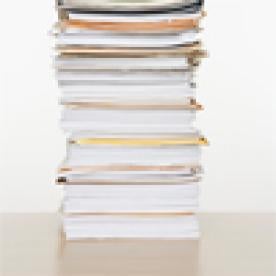On July 28, 2015, the Wisconsin Department of Natural Resources (WDNR) posted four draft guidance documents, which would establish new state policies for regulating particulate matter with an aerodynamic diameter of 2.5 microns or less (PM2.5), and granting monitoring variances to industrial sand mine operations. These documents, if finalized, will advance a significant technical conclusion that direct emissions of PM2.5 do not cause or exacerbate violations of the PM2.5 National Ambient Air Quality Standard (NAAQS). Building on this conclusion, WDNR will no longer require air dispersion modeling to be performed for PM2.5 when issuing most air pollution control permits, with the exception of major prevention of significant deterioration (PSD) and non-attainment area new source review construction permits. WDNR is accepting comments on these draft guidance documents until August 27, 2015.
Background
Since the adoption of the Clean Air Act, United States Environmental Protection Agency (EPA) has regulated particulate matter (PM) in the atmosphere. This has been complicated since PM is not a homogeneous pollutant, but rather consists of a mixture of solid and liquid PM with different chemical compositions, sources of origin and sizes. Initially, EPA regulated PM with an aerodynamic diameter of 100 microns or less (i.e., total particulate matter). That evolved into NAAQS defining acceptable concentrations of PM smaller than 10 microns (PM10)and most recently, PM2.5. EPA and the scientific community are currently evaluating the possible regulation of ultra-fine PM.
As EPA shifted its focus to regulating smaller forms of PM, the chemistry associated with these smaller pollutants has added to the complication of regulation. With respect to PM2.5, it is a pollutant emitted directly by certain emission sources (e.g., combustion processes) and is also formed secondarily in the atmosphere by the chemical interaction of different pollutants. To date, regulators have implemented air permitting policies that have simplified these complications. For example, many states simply assume that a percentage of a source’s PM10 emissions consist of PM2.5. Many states also assume that direct emissions of PM2.5 have the potential to significantly contribute to ambient concentrations of PM2.5. These generalities and assumptions have presented problems, especially when performing air dispersion modeling when issuing air permits to stationary sources.
On this point, WDNR may approve an air permit application after finding, among other things, that “[t]he source will not cause or exacerbate a violation of any ambient air quality standard or ambient air increment under s. 285.21(1) or (2).” Air dispersion modeling has been the predominate mechanism for demonstrating compliance with this criterion. However, air modeling has its limitations and presents challenges which are becoming increasingly difficult to manage as NAAQS are being lowered by EPA.
With respect to PM2.5, a significant portion of the available PM2.5 NAAQS is already consumed by ambient concentrations of the pollutant. These ambient concentrations are attributable to existing area, mobile and stationary sources that directly emit PM2.5, or emit the precursors that secondarily form PM2.5. The relatively small percentage of PM2.5 that might be added to ambient air by a new minor source or a minor modification is too inconsequential to be determined as “causing or exacerbating” an exceedance of a standard when compared to the other emission sources that are also contributing to ambient concentrations. Based on this logic, Illinois, Indiana, Nebraska and Arkansas do not model emissions from minor sources and minor modifications when issuing air permits. WDNR’s draft guidance documents build upon the regulatory pathway forged by these other states.
WDNR undertook its own technical analysis of the utility of modeling direct PM2.5 emissions when making air permitting decisions. In a Technical Support Document (TSD) entitled “Air Quality Review of Industrial PM2.5 Emissions from Stationary Sources in Wisconsin,” WDNR concludes that dispersion modeling of direct PM2.5 emissions does not provide information useful for understanding the impact of those emissions on ambient air quality. WDNR found that direct, industrial stationary source PM2.5 emissions do not correlate with the ambient concentrations of PM2.5 in the atmosphere around a stationary source. Rather, PM2.5 exhibits characteristics more like a regional pollutant influenced by the emissions from numerous sources dispersed throughout a broad geographic region. Using this premise, WDNR has released the four draft guidance documents restricting the circumstances when PM2.5 air dispersion modeling will be required when issuing air permits. Each of the draft documents are briefly described below.
Draft “2015 Approach to Dispersion Modeling for Permits”
WDNR is revising its 2011 guidance document defining dispersion modeling expectations for air permit applicants. This new revised policy memorializes the Department’s conclusion that direct, primary PM2.5 emissions will not cause or exacerbate a violation of PM2.5 NAAQS and, therefore, no modeling will be required for virtually all air permit applications. The only exception would be major construction projects that require an air construction permit under Chapters NR 405 (Prevention of Significant Deterioration) or 408 (Non-Attainment New Source Review). Notably, sources seeking Part 70 operation permits will not be required to model direct PM2.5 emissions.
Draft “Guidance for Including PM2.5 in Air Pollution Control Permit Applications”
In this draft guidance, WDNR proposes changing how it considers PM2.5 emissions in reviewing and acting upon air pollution control permit applications. First, WDNR will no longer require estimating PM2.5 emissions from fugitive dust sources, mechanical handling, grain handling and other low temperature PM sources. Rather, PM2.5 emission estimates will only be required for combustion and high temperature industrial processes that directly emit significant amounts of PM2.5.
Second, WDNR proposes a “weight of evidence” finding that direct emissions of PM2.5 do not cause or exacerbate a violation of the PM2.5 NAAQS or increments.
Based on these two conclusions, the draft policy proposes simplifying the manner in which air permit applicants must calculate PM2.5 emissions from a project, significantly limits the circumstances in which PM2.5 modeling must be performed for an application and restricts the instances in which PM2.5 emission limitations must be established by the WDNR for inclusion in air permits.
Draft “Wisconsin Air Dispersion Modeling Guidelines”
The draft “Wisconsin Air Dispersion Modeling Guidelines” is a comprehensive guidance document which provides detailed instructions on performing air dispersion modeling for different types of air permit applications. Included within this document is the TSD (described above) setting forth WDNR’s technical and scientific basis for undertaking its revised approach to PM2.5 permitting and modeling.
Draft “Variance Requests and Procedures Under NR 415.075(4)”
Industrial sand mining operations are required by rule to install and operate ambient air monitoring equipment downwind of their facility to measure ambient concentrations of PM10. Facilities subject to this requirement are allowed to request a variance from the monitoring requirements which can be granted by WDNR. This new draft guidance document sets forth the criteria and procedures that WDNR will use to evaluate variance requests going forward.
Notably, this guidance is being released shortly after the publication of a recent study which documents that certain industrial sand mining operations in Wisconsin have not exhibited or resulted in meaningful increases in PM4 concentrations downwind of their facilities. The draft guidance would allow industrial sand mining operations to compare their operations to those that were involved in the study as justification for granting a variance.
Conclusion
The draft guidance documents, along with the TSD supporting WDNR’s policy positions, are a significant development. Comments will be accepted until August 27, 2015. The guidance leaves several regulatory issues unresolved but overall sets forth a path forward to clarify the regulatory expectations of permit applicants. WDNR stresses that it is committed to regulating PM2.5 and its precursors consistent with federal requirements. WDNR’s future regulation of stationary sources of PM2.5 precursors (NOx and SO2) will further decrease ambient concentrations of PM2.5. If PM2.5 concentrations nonetheless increase in future years, WDNR is committed to considering regulatory requirements to address those increases in conjunction with any advances in technology that may have occurred by that date.




 i
i

